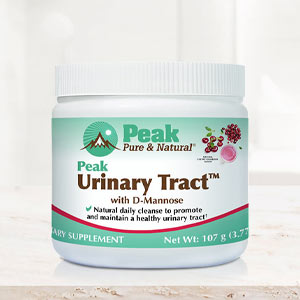Get Easy Health Digest™ in your inbox and don’t miss a thing when you subscribe today. Plus, get the free bonus report, Mother Nature’s Tips, Tricks and Remedies for Cholesterol, Blood Pressure & Blood Sugar as my way of saying welcome to the community!
How breastfeeding makes women’s hearts healthier

We all know that breastfeeding is healthy for babies, but it has health benefits for the mother, too.
Women who breastfeed their babies experience less postpartum bleeding, fewer urinary tract infections, reduced chance of anemia and lower risk of postpartum depression.
Breastfeeding mothers also experience faster weight loss after birth due to the 500 extra calories burned per day to build and maintain their milk supply.
In fact, breastfeeding has exhibited some long-term benefits for women as well. It decreases a woman’s risk of breast and ovarian cancers, rheumatoid arthritis, lupus and endometriosis. Breastfeeding also has been linked with a lower risk of diabetes, hypertension, cardiovascular disease, Alzheimer’s disease and age-related osteoporosis.
Until now, it has not been clear what mechanism reduces these risks in lactating women. But researchers have begun exploring how breastfeeding affects certain types of fat that can contribute to some of these health issues…
The impact of breastfeeding on fat around the abdomen and heart
A research team recently analyzed lactation and the development of cardiometabolic diseases in women participating in the 30-year Coronary Artery Risk Development in Young Adults (CARDIA) study.
In the study, researchers examined visceral and pericardial fat to determine how they’re influenced by breastfeeding. Often called “active fat,” visceral fat can increase the risk of developing dangerous conditions like cardiovascular disease, heart attacks, type 2 diabetes, stroke, Alzheimer’s disease and breast and colorectal cancers. While visceral fat can build up in the arteries, it is more typically stored in the abdominal cavity near organs such as the stomach, liver and intestines.
Visceral fat tends to produce adipokines, which secrete hormones that influence insulin sensitivity in the muscles. Competition for insulin binding sites increases as visceral fat grows, raising the risk of insulin resistance or glucose intolerance.
Pericardial fat is fat that’s located on the outside of the heart and may also have an impact on specific cardiovascular health issues by potentially placing additional weight on the heart and affecting how it beats.
The results of the study show that women who breastfed more during their reproductive years didn’t gain as much weight and tended to have less fat buildup in the abdomen or around the heart.
“After accounting for lifestyle behaviors and other risk factors across the life course, the lower visceral and pericardial fat among women with longer lactation persisted,” says senior research scientist Dr. Erica Gunderson. “This indicates lactation may have effects that persist many years through midlife.”
Previous analysis of the CARDIA study women showed a relationship between duration of breastfeeding and a 50 percent lower risk of progression to type 2 diabetes, independent of social or lifestyle behaviors, their metabolic profiles or body size before pregnancy. Lactation may also prevent the development of future cardiovascular disease by reversing high blood levels of triglycerides during pregnancy and avoiding a reduction in HDL, or “good,” cholesterol following delivery.
“Now we are showing that, yes, breastfeeding more is actually beneficial to a woman’s health and can help to prevent cardiovascular disease,” says Dr. Duke Appiah, an assistant professor of public health at the Texas Tech University Health Sciences Center.
Appiah says that his research team is investigating other issues related to lactation, such as how it influences cytokines and other hormones associated with plaque buildup in the arteries.
“We also want to look at how lactation may affect left ventricular structure and function independent of pericardial fat,” Appiah adds.
Recommendations for breastfeeding
According to Appiah, the study supports the recommendation by the American College of Pediatricians (ACP) that mothers breastfeed their infants exclusively for their first six months, then combine breastfeeding with age-appropriate food between from the ages of six months and 12 months. This recommendation is widely supported by health and physician organizations, including the American Academy of Family Physicians (AAFP) and the American Academy of Pediatrics (AAP).
However, the AAP recommendation also states that women continue to breastfeed their children for “one year or longer as mutually desired by mother and infant.” And the ACP recommends that women breastfeed their children for two years or longer if they are able.
Editor’s note: There are perfectly safe and natural ways to decrease your risk of blood clots including the 25-cent vitamin, the nutrient that acts as a natural blood thinner and the powerful herb that helps clear plaque. To discover these and other secrets of long-lived hearts, click here for Hushed Up Natural Heart Cures and Common Misconceptions of Popular Heart Treatments!
Sources:
Study Investigates Link Between Lactation and Visceral, Pericardial Fat — Texas Tech University Health Sciences Center
The Benefits of Breastfeeding for Baby & for Mom — Cleveland Clinic
Breastfeeding and the Use of Human Milk — Pediatrics
Breastfeeding, Family Physicians Supporting (Position Paper) — American Academy of Family Physicians (AAFP)














